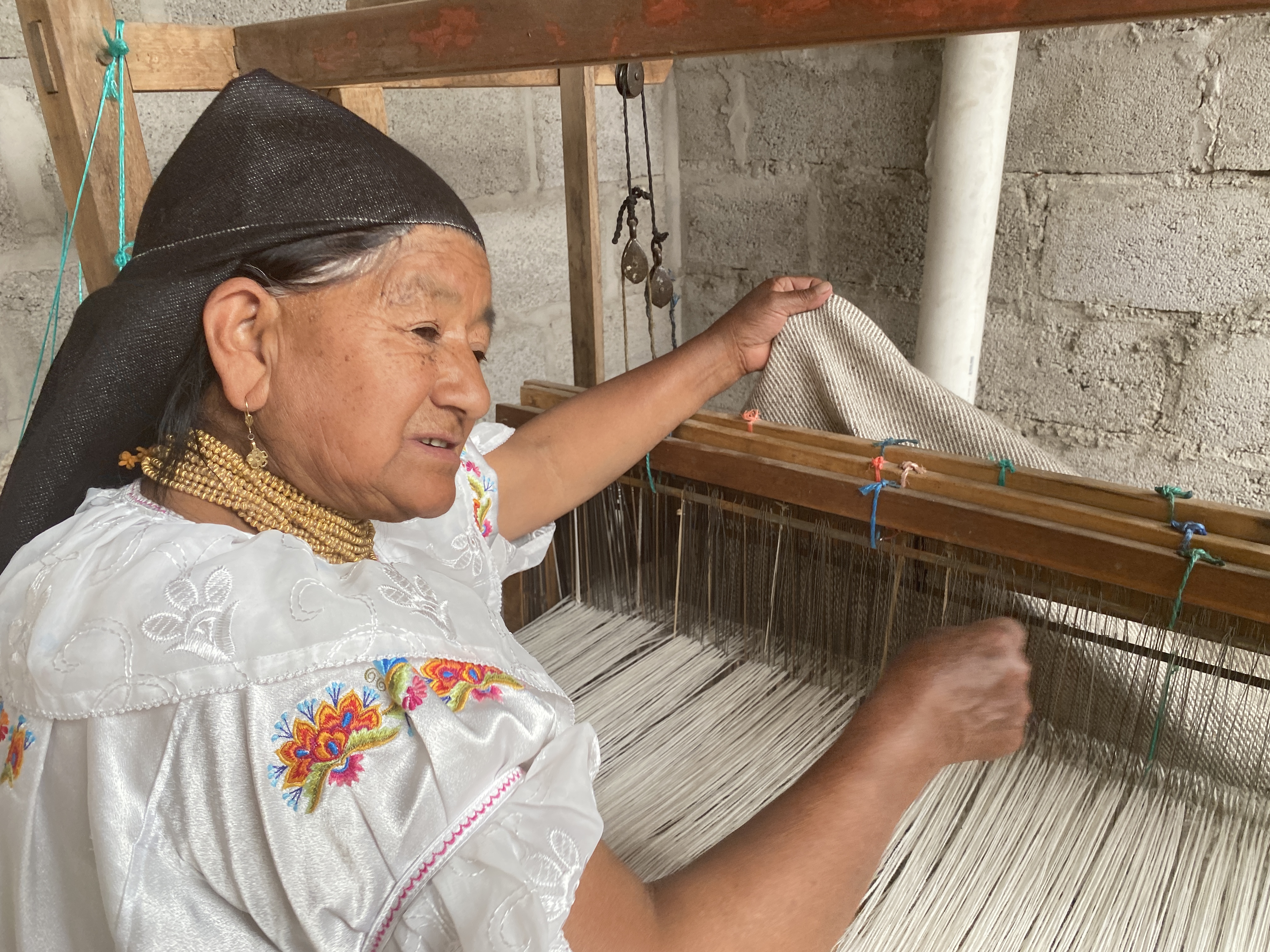All artisanal crafts are made through a unique and personal process. In this particular case, weaving for Otavalo’s people is a tradition present over generations. But, before diving into whole process, let’s start with the basics.
Otavalo is a small town two hours away from the capital of Ecuador, Quito. This is one of the cities with a more indigenous population in the country. They’re experts in weaving and other handicrafts products, alongside small agriculture for local consumption. Handmade products are unique and special, made for people by expert artisans.
Here, people weave alpaca wool. The alpaca fibre is hypoallergenic, repellent to water and dirt, resistant to odours, and it’s so soft, especially the baby alpaca’s wool. It keeps all its warmth and heat inside.
So, the process starts with the shearing, made once a year. The alpaca farmers carefully shear them with a hand razor so the fleece has the same length and the quality of the fibre doesn’t get compromised. The fleece has to be at least 7cm long in order to obtain good quality wool.
The wool must be shorn off in one cut, meaning that it is only one long haul. This technique creates one big fleece that is gathered together. The fleece from the rest of the animal's body, like the neck and legs, is separated because it has another length.
After that, the sorting and carding of the hair begin. During this stage, the artisans sort, separate and take away other materials from fleece by hand. Their skills trump that of machines because of their attention to detail. The fleece is spread out on the floor so that the shorter, thicker, or uneven pieces of hair can be separated. Then, it’s possible to start carding, when people combine wool fibres. This is done by pulling gently or stretching out the hairs. The next step is to make tops that look like loose ropes.
With these tops, the twisting of the fibres can begin to start the transformation into yarn. Depending on the type of wool, there are different grades of twisting. This process is the one that gives the wool its strength. If the wool is more twisted the thread is going to be stronger, but at the same time the wool can lose its softness.
Afterwards weavers wash the wool. This part is essential because it will remove any grease, stain or dirt that the wool might have caught in any stage of the process. Artisans wash the wool in warm water, let it submerge for about 30 minutes, then apply a soft detergent. The wool can't be rubbed, wrung, or squeezed and it's spread for drying. Only then it's time to dye the wool if you want any other colour different from the natural shade.
When the wool is ready, we start the designing process. Our artisans design the pattern, and we work with them to choose the palette. And after all this, they start weaving our products. The whole process from the sorting and carving to a finished garment takes around 4 months as it is an entirely handmade process. For our blankets we use 70% of alpaca wool, 20% cotton and 10% acrylic, and for our ponchos we use 50% alpaca’s wool and 50% acrylic. But we also have some products made with 100% baby alpaca’s wool.
We believe that working with artisans in this community is very important because one of our core values is fair trade. That is why we like to share the whole process with you, starting with the person that made your product. We think that sharing is caring, and now we are sharing ancestral traditions from the people of Ecuador. Made with love.
Shop the article
Read more
WORLD
Artisanal Weaving In Otavalo: From Fleece To Blanket
All artisanal crafts are made through a unique and personal process. In this...
WORLD
Discovering London With Passion
It had been a lifelong dream to study at a drama school and to live the...
WORLD
The Ultimate Liverpool City Guide
Think of Liverpool and what comes to mind? The Beatles or the football...
WORLD
Local Provence: How To Spend A Few Days In Provence
Oui, c’est magnifique! Provence & the Cote d’Azur embody the glitz &...
WORLD
How Can Travel Fuel Creativity?
I was born into a family of makers, folk with something always on the go....



